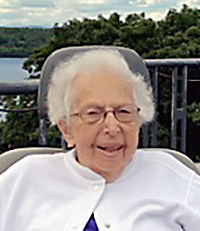A Special Town Meeting with one warrant article, so… one simple vote, right? Not so much, as it turned out.
The final vote was overwhelmingly in favor of paying for designs for a community center, but getting there took almost four hours on a rainy November 30 evening. The Donaldson Auditorium and lecture hall were filled to capacity and extra chairs had to be brought in to accommodate the hundreds of residents who called out greetings and shook off raindrops as they made their way along a check-in line that snaked down hallways and around corners.
The motion that was finally approved allows the town to move $325,000 from the debt stabilization fund to hire design and engineering consultants to develop “a range of Community Center design choices and budgets, including options not to exceed 75% and 50% of the current project estimated cost of $25 million, for the Hartwell Complex, supplemented or not with existing available town space.” There will be a vote on the preferred option at another STM a year from now, and a funding vote in March 2024.
The meeting, which started about half an hour late, included presentations from the Council on Aging & Human Services and the Parks and Recreation Department (the two primary users of the proposed building) as well as the Community Center Building Committee, Finance Board chair Andy Payne, and others. Together they laid out in detail the findings of the many previous studies on how Bemis Hall and the Hartwell pods are inadequate for the services provided by the two departments, why they should be under one roof in the Hartwell complex, analyses of various other sites around town, and the tax implications of town borrowing at various levels.
No one seemed to doubt that some expenditures to fix the problems are required, but voters reiterated their unhappiness with the $25 million price tag for the two design concepts suggested in 2018 in several venues, including the recent State of the Town meeting and dozens of posts on LincolnTalk. The Select Board and CCBC acknowledged this in recent meetings as they debated how to word the STM motion. They decided together that voters would be asked for funds to develop several options, with the $25 million concept being the most expensive. With the CCBC’s blessing the board also decided to specify the Hartwell location in the wording it endorses on November 28.
“We, like you, have been surprised and dismayed by the projected costs,” CCBC Chair Sarah Chester said at the STM, adding that the focus will be on “scaling back” the two initial designs. “We recognize that the $25 million is far too much.”
However, the town still needs to hire professionals to come up with alternatives. “We absolutely need an architect to develop these options,” Select Board member Jonathan Dwyer said.
If the motion were to be voted down, the town would still need to spend $4.8–$6.2 million to renovate the decaying pods and $8.8–$9.6 million to upgrade Bemis Hall as a senior center, even though that would not solve the parking issues. Delaying a decision about building a community center “will increase the cost of any solution year after year,” she said.
Eric Harris, a former FinCom and CCPPDC member, urged residents not to repeat earlier mistakes. “The reason we’re here today and nobody wants to talk about it is the defeat of the 2012 school project,” he said. (The estimate at that time was $49 million, with the town paying $28 million and the rest coming from the state; Lincoln eventually had to fund the entire school project by itself for $93 million.)
“We got a better project but I have questions as to whether it was worth $65 million more,” Harris continued. “A lot of people are making the same arguments that it’s too much money for taxes” and people will be forced to move out of Lincoln, “but I haven’t noticed there’s been a great exodus from town. Seniors were told that if they waited, we would build a community center in exchange for supporting the school project. If we wait, we run the risk of doing what we did with the school building project before: greatly raising the cost.”
“I think we should all remember that implicit promise,” said Rhonda Swain, president of the board of the Friends of the COA&HS, adding that a fundraising committee was “formed and ready to get to work” to solicit private donations to help defray the community center’s cost.
But others were unconvinced. “My belief is more tasks still need to be done,” Dennis Picker said. “We should carefully evaluate [needs] service by service” and fund “only essentials and a well considered use of existing facilities as appropriate.” The motion’s wording “does not require we get a vetting of needs vs. wants, or a no-frills option.”
June Matthews agreed, suggesting that the facility should be located in South Lincoln close to shops and the Ryan Estate to revitalize the village, although others argued that that site has numerous issues of its own. “Hartwell is not the center of the community,” she said.
Amid all the discussion and questions, there were several time-consuming motions and votes before residents reached the finish line… one to end debate early on (easily defeated). One to hold the final vote by secret ballot (defeated, though it required a standing vote count to be sure). Another vote to end debate (again defeated, though again requiring counters to tally the show of hands, with the final margin 59% to 41%). Six amended motions submitted on paper, which Town Moderator Sarah Cannon Holden asked the writers to consolidate into one. Further debate on the floor over the exact wording of the amendment spearheaded by Ross Tucker (how many price points should it specify as a percentage of the original estimate? Should it require a $15 million option at the Hartwell complex? Should it mention other possible sites for some of the COA&HS and PRD activities?).
Then there was debate among officials over whether $325,000 would cover the cost of developing more than the two initial designs. FinCom Vice Chair Paul Blanchfield initially said more money would be needed, but after huddling with colleagues, announced that the sum would be enough to produce three price-point options.
Finally, as the 11 p.m. hour approached, there was a third vote to cut off debate on the amendment (unanimously passed). Then there was a vote to amend the motion (approved by the required two-thirds majority, 233–108, after another standing vote, though several dozen people had left the meeting by then). And finally the vote on the motion itself, which passed with only a handful of dissenters.
“This is the last time we’re having a town meeting without town counsel present,” Holden remarked dryly.








